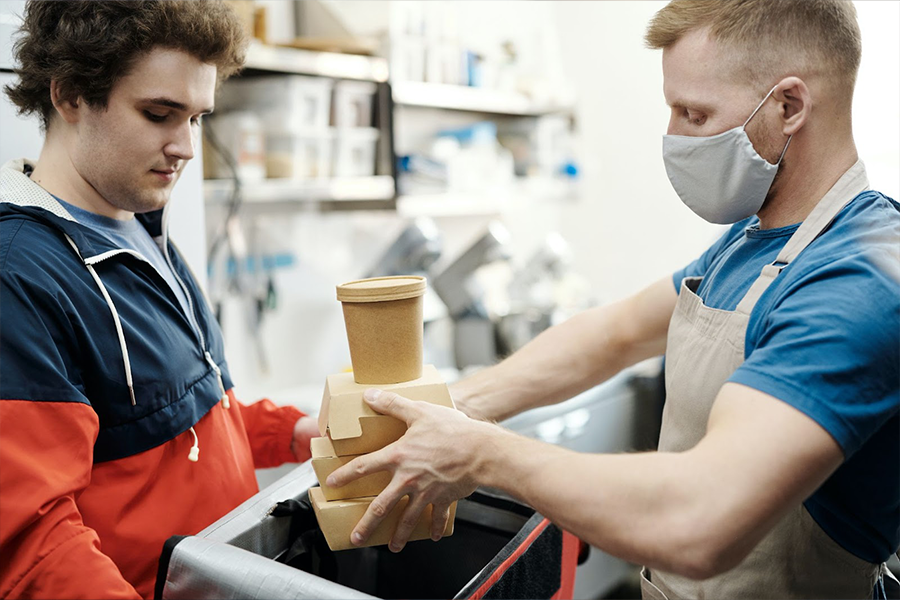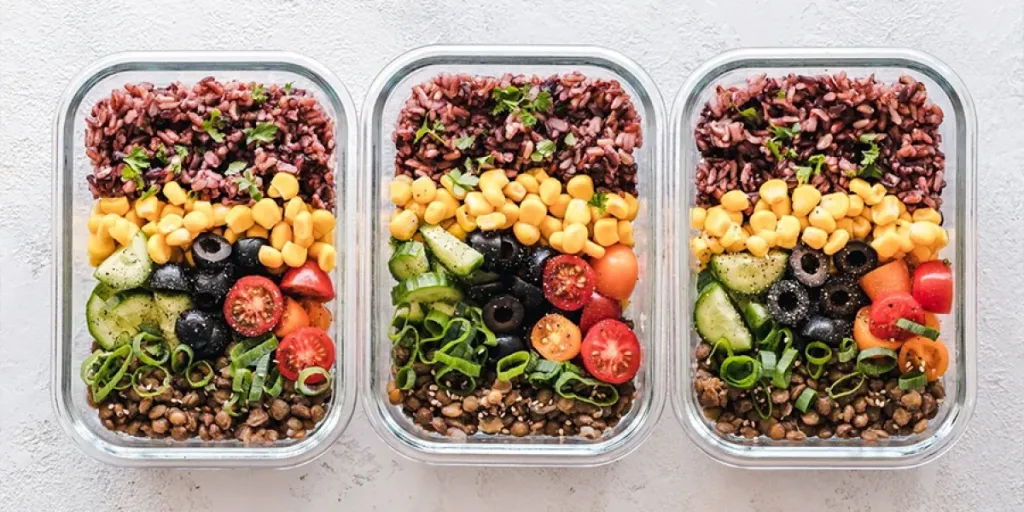Food takeaways have revolutionized the food industry, allowing customers to take their food home safely and have the same dine-in experience as they do in restaurants. Without them, people would wait all day for seats and not get the satisfaction they hoped for.
What makes takeaway food a hit in these restaurants? Undoubtedly, a proper food packaging strategy does. This article will cover the significance of food packaging and various takeaway food packaging trends.
Table of Contents
Why is packaging important for takeaway food?
Types of food packaging trends
Why does the food industry need to up its packaging game?
Why is packaging important for takeaway food?
Restaurants and catering businesses ensure their customers stay happy with appropriate packaging. Each food requires safe containers and friendly packaging options to maintain its quality. The takeaway market is popular across North America, Europe, Asia Pacific, and emerging markets like South Asia.
The takeout containers market is forecasted to grow at a CAGR of over 3.5% over the forecast period of 2020 to 2030. Before we go through the packaging trends responsible for such a projection, let us understand why packaging style and container types are crucial details to pay close attention to.
To maintain food quality
No surprises. Packaging containers are essential to maintain food quality. It can be frustrating for customers to get their fried dishes all soggy or have greasy food leaking through the takeaway containers. It ruins their experience and the caterer’s reputation. The container type and packaging methods are crucial to separate hot food from cold, keep food warm and fresh, and guarantee a safe delivery to customers’ homes.
To sell more food
Packaging allows restaurants to sell more by charging premiums for delivery charges or specific packaging. Moreover, the science behind takeouts is crucial for repeat buys. Takeouts improve customer satisfaction. When a restaurant aces its packaging strategy, it brings back more customers and increases sales.
To showcase the brand image
Nowadays, the packaging style can tell a lot about a company’s values. Customers are more aware of the environment and critical of how a business conducts itself to society. When a restaurant focuses on sustainability by using recyclable materials and biodegradable food packaging, customers know they show concern for the environment. In addition, some food chains like to strengthen their brand by incorporating fancy packaging designs and distinctive color combinations. As a result, all these factors help customers recall the brand better.
Types of food packaging trends
Sustainable packaging
Times have changed with customers wanting to know the different materials their takeaway food containers are made of. People are more aware of many environmental issues and critical of packaging materials they get from various food chains. Many restaurants practice sustainable packaging to steer social responsibility and look out for the environment. Sustainable packaging consists in using recyclable, compostable, and reusable containers. One of the most commonly used takeout materials is paper. Paper is biodegradable and pretty cost-effective. It allows heat insulation and occupies less space, making it a reliable material for storing meals.
Paper bowls are great for storing salads, and cardboard boxes are used for pizza delivery because they keep it warm and have small holes on the side to allow some air to escape. As a result, they prevent food from getting soggy. Cardboard sleeves keep fried items such as french fries warm and crispy. And most fast-food chains deliver food in paper bags. The only downside to paper materials is storing greasy food, or else they can cause leaks which could spoil one’s eating experience.
The latest sustainable packaging trend is using materials such as PLA bioplastics (usually made from cornstarch) or bagasse pizza boxes (usually derived from sugarcane remains). They are compostable and environmentally friendly materials used to package food. However, they are often on the expensive side.
Convenient packaging

Takeout containers were initially invented for convenience. With busy lifestyles, customers need grab-and-go foods with easy-removable containers and wrappers to put minimal effort into them. Takeout containers that are labeled properly with clear fonts can help customers make swift decisions.
Firm paper cups are reliable in holding liquid and ensure it stays intact in a moving car. Biodegradable takeaway containers are lightweight and easily carryable by customers during rush hours. Moreover, they provide great insulation, keeping food warm and fresh.
Minimalistic packaging

The saying less is more counts when following a minimalistic packaging style. It is going back to basics as it makes no use of unnecessary packaging materials and redundant designs to get its message across and deliver ultimate satisfaction for consumers. This trend catches the eyes of many restaurant chains because it saves costs and uses eco-friendly packaging materials to assist their cause.
With fewer designs or a lack of redundant packaging, restaurants are more likely to communicate their message to consumers better than they would with complicated artwork all over the place. Aluminum foil containers are durable packaging materials that require minimal labeling and designs. They can be reliable in storing greasy and oily foods. On the other hand, aluminum containers are not microwave friendly.
Transparent packaging

Sometimes, it is all about looks. When hungry customers order a takeaway, they adore staring at their mouthwatering food when they grab those containers out of the bag. Restaurants make use of transparent packaging so they can display food—mainly cakes and baked products. This type of packaging can make takeout food look more elegant and gives consumers a good view of the food’s condition.
In this situation, disposable plastic containers can give cakes and other baked goods a clear transparent look. They offer good protection and can hold in moisture well. They are durable for most kinds of foods and on top of that, very eco-friendly.
Personalized packaging
Personalized packaging helps restaurants build strong relationships with regular customers through personalized notes during packaging. It takes branding to another level. Restaurants make an effort to know each customer’s name and attach personal messages to the food packaging.
In these current times, when social distancing can keep us apart often from socializing with close ones, personalized packaging can help create a bond with the customers. As a result, it makes people feel content, and it can act as a good word-of-mouth marketing to promote their brand within their respective circle.
Why does the food industry need to up its packaging game?
Packaging can make or break reputations. Restaurants and various food chains have high demand in finding the ideal packaging materials in terms of durability, size, shape, convenience, and how they can establish a brand image in the eyes of their customers.
As we can tell by studying these packaging trends, consumers are more environmentally conscious these days and look to shift to recyclable and biodegradable packaging materials. On the other hand, they restrict the use of plastics.
The takeaway market will keep growing, and restaurants are on the lookout to add adequate takeout containers to their inventory. The latest takeout container trends provide great options for wholesalers and retailers to assist catering businesses with the food packaging supplies they demand.




